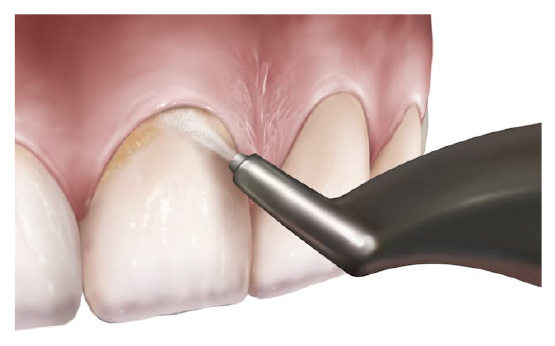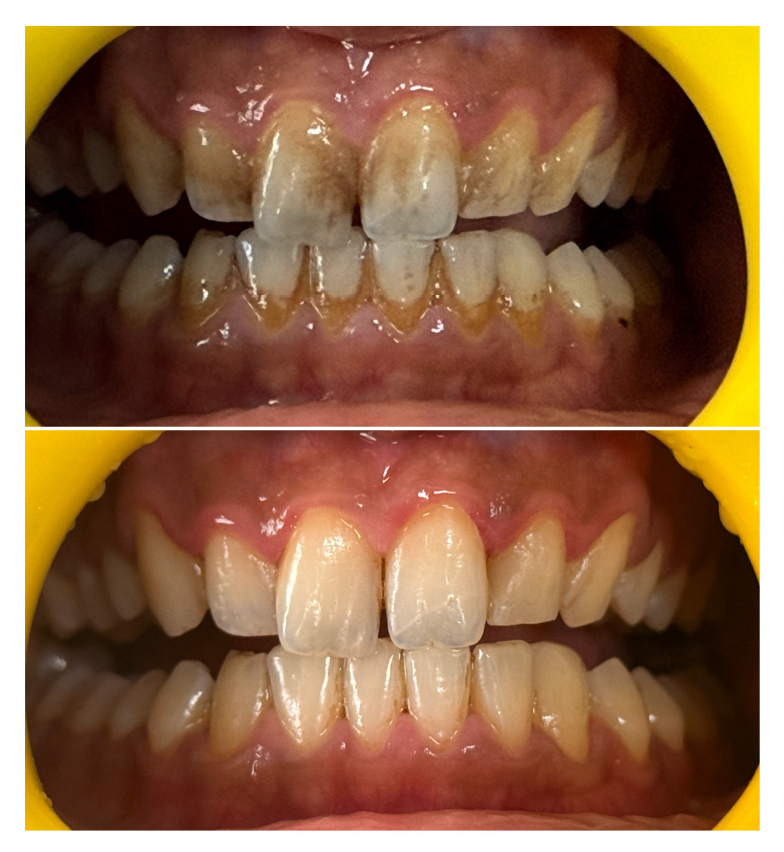 21 May 2025
21 May 2025
We all crave that fresh, clean feeling after a dental visit, right? For years, the trusty ultrasonic scaler has been our go-to for banishing plaque and tartar. But have you heard about a gentler, often more effective way to achieve that dazzling smile? Enter dental air polishing.
This innovative procedure is gaining popularity, and for good reason. Instead of the familiar scraping and vibration, air polishing uses a controlled stream of air, water, and a fine powder to gently yet powerfully remove biofilm, stains, and early calculus buildup. Sounds intriguing, doesn’t it? Let’s dive into why air polishing might just be a superior option compared to conventional scaling in many situations.
The Mechanics: Air Polishing vs. Scaling
Think of it this way:
- Conventional Scaling: Imagine a tiny chisel gently chipping away at the deposits on your teeth. Ultrasonic scalers add vibrations to this process to help dislodge debris. While effective, this mechanical action can sometimes feel a bit… well, scrapey.
- Air Polishing: Now picture a mini sandblaster, but for your teeth! A fine powder, often sodium bicarbonate, glycine, or erythritol, is propelled by a stream of compressed air and water. This combination gently and effectively buffs away surface stains, plaque, and soft calculus.
The Perks of Polishing: Why Patients (and Dentists!) are Loving Air Polishing
Here’s where air polishing truly shines:
- Gentler on Teeth and Gums: For patients with sensitive teeth or gums, air polishing can be a game-changer. The non-contact nature of the procedure minimizes discomfort and reduces the risk of tissue trauma. Say goodbye to that post-cleaning sensitivity!
- Superior Stain Removal: Air polishing is incredibly effective at removing extrinsic stains caused by coffee, tea, red wine, and smoking. The fine powder can reach into grooves and pits that traditional scalers might struggle with, leaving your teeth noticeably brighter
.

- Enhanced Access: The fine nozzle of the air polishing device can navigate tricky areas in the mouth, including deep pockets around teeth and around orthodontic brackets or dental implants. This allows for more thorough cleaning in hard-to-reach spots.
- Faster Procedure: In many cases, air polishing can be a quicker procedure than traditional scaling, especially when focusing on stain removal and biofilm management. This means less time in the dental chair – a win for everyone!
- Improved Patient Comfort: Many patients report a more comfortable and less invasive experience with air polishing compared to the vibrations and pressure associated with scaling.
- Ideal for Biofilm Management: Air polishing is particularly effective at disrupting and removing the sticky biofilm that harbors bacteria and contributes to gum disease and cavities.
Where Scaling Still Holds Its Ground
It’s important to note that while air polishing offers numerous advantages, conventional scaling still plays a crucial role in maintaining oral health. Scaling is often necessary for:
- Removing Hard, Stubborn Calculus: While air polishing can remove early calculus, firmly attached, heavy tartar buildup often requires the mechanical action of scaling for effective removal.
- Subgingival Scaling: For cleaning below the gum line where hard calculus deposits are common, scaling remains the gold standard.
The Takeaway: A Powerful Partnership
The truth is, dental air polishing isn’t necessarily about replacing conventional scaling entirely. Instead, it often acts as a powerful complementary procedure. Dentists strategically use air polishing for stain removal, biofilm management, and gentle cleaning, while reserving scaling for the removal of heavy calculus deposits.
Ultimately, the best approach for your dental cleaning will depend on your individual needs and oral health. Don’t hesitate to discuss the benefits of air polishing.You might just discover a gentler, more effective path to a brighter, healthier smile!
